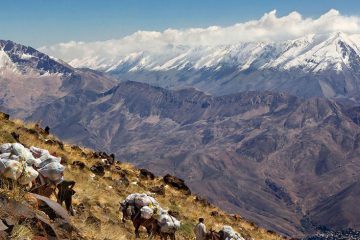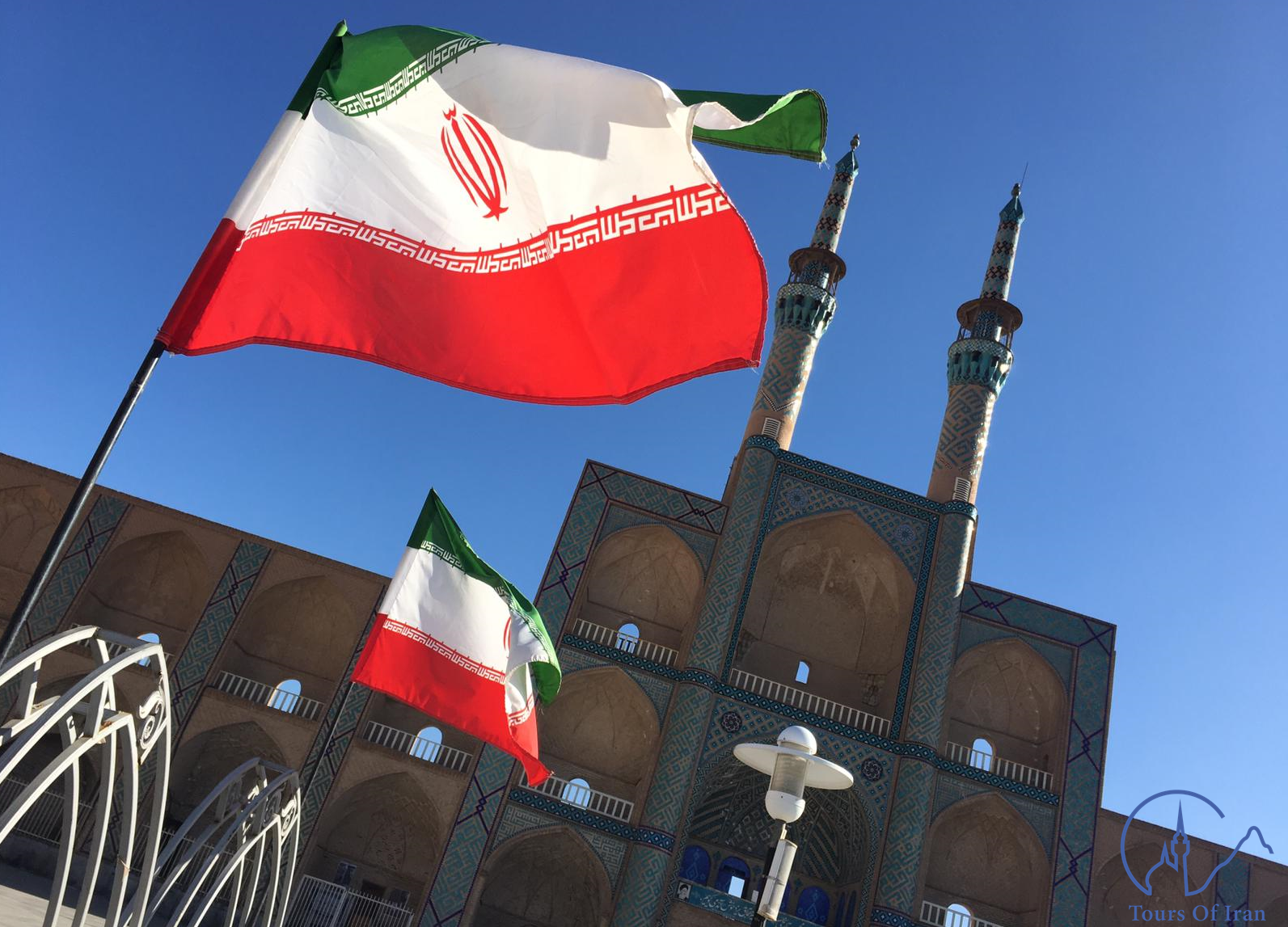
EXPLORE BEAUTIFUL VILLAGES IN IRAN
Discover the beautiful villages of Iran! Forget the popular cities—explore these charming places for a unique and scenic experience. Check out the best villages to visit and enjoy their beauty.
Explore the heart of Iran through its villages, where the roots of great civilizations have thrived. These beautiful villages of Iran have been the lifeblood of the country, offering a respite from the hustle and bustle of cities. Immerse yourself in the tranquility, warmth, and hospitality of Iranian villages, where green landscapes stretch as far as the eye can see.
A visit to these beautiful villages of Iran provides a rich experience, offering insights into pure Iranian culture, customs, and lifestyle, accompanied by the delights of Persian cuisine. Each village tells a unique story through its architecture, diverse ethnic communities, and indigenous cultures. Whether preserving traditional styles or adapting to welcome tourists, these villages are perfect for any visitor seeking an authentic and refreshing experience in Iran.
KANDOVAN VILLAGE

In the first beautiful villages of Iran, Explore the captivating charm of Kandovan, an ancient village nestled in the East Azarbaijan province, near Tabriz, Iran. With a rich history spanning at least 800 years, this extraordinary destination invites visitors to bask in its scenic beauty.
Home to 670 inhabitants, Kandovan village boasts a unique rocky architecture, carved into the rocks that make up its surroundings. The iconic beehive-like houses, some dating back 700 years, are believed to have formed partially from volcanic remnants of Mount Sahand’s eruptions centuries ago. The residents have skillfully carved kitchens, halls, and bedrooms into the cliffs, adorned with windows featuring colorful glass decorations.
Standing as one of the world’s three rocky villages of its kind, Kandovan is the sole inhabited one. Its architecture and the traditional lifestyle of its locals set against the ancient backdrop make it an exceptional destination. In contrast to other locations like Cappadocia (Turkey) and (the United States), Kandovan remains a vibrant, living community.
For a delightful souvenir, indulge in the village’s renowned honey. Situated amidst the Zagros Mountains, Kandovan offers a picturesque summer retreat, drawing nomadic tribes with its lush pastures. Adding to its allure, the Kandovan mineral water spring is a notable attraction, believed to possess healing properties for kidney diseases.
MASOULEH VILLAGE
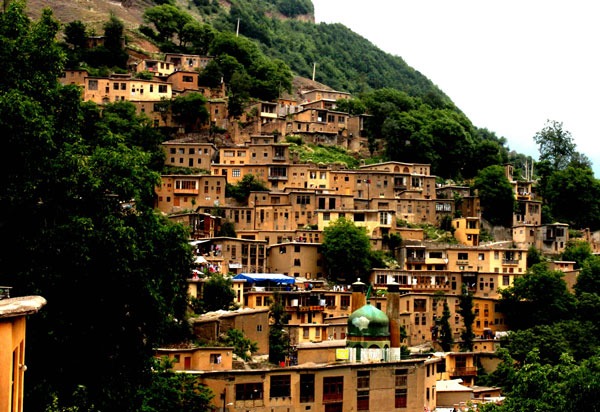
In the next beautiful villages of Iran, Discover the enchanting Masouleh village, strategically nestled 60 km southwest of Rasht and 32 km west of Fuman, seamlessly integrated into the Alborz Mountains at an elevation of 1,050 meters above sea level.
What captivates visitors most is the traditional architecture of Masouleh houses. Divided into two floors – the Winter floor, known locally as “Sumeh,” and the Summer floor – these houses are a major draw for tourists. The Winter section features a small room with a central stove for cooking and heating, adorned with niches for displaying cooking dishes, decorative porcelain, and copperware. Meanwhile, the Summer section, or the counter room, boasts wooden, upholstered windows with porcelain knots and geometric patterns, adorned with vibrant colored glasses.
Masouleh’s unique architectural layout, one of the developments during the Zandieh period in the 18th century, involves roofs of lower-tier houses serving as courtyards for those above. Interconnected roofs often form public streets, with the land in front of house doors and rooftops doubling as sidewalks. Narrow streets and numerous stairs create a pedestrian-friendly environment, excluding motor vehicles.
Explore the culinary delights of the most beautiful village of Iran, ut h, where traditional dishes like Mirza Ghasemi take center stage. This delicious dish, originating in 1860 AD and named after its innovator, Qasim Khan Vali, the governor of Rasht, is a North Iranian specialty.
Immerse yourself in the local culture through Masouleh’s souvenirs, ranging from Kilim (goat’s hair needle-work rugs), Jajim (primitive Persian carpets made of wool or cotton), shawls, socks, wood, and metal products, to local clothing, sweets, small yarn-woven dolls, gloves, and various handcrafted items available at the village’s vibrant bazaar.
MEYMAND VILLAGE
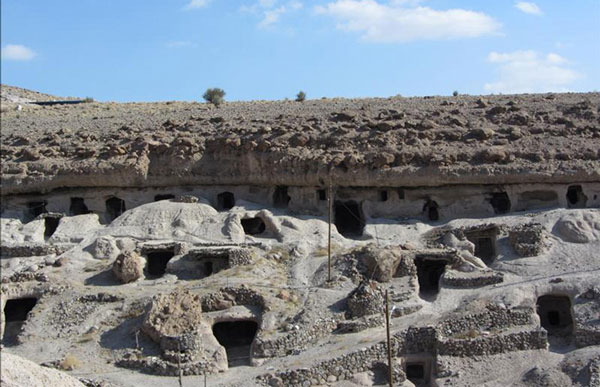
In the third beautiful village of Iran, Explore the captivating Meymand village, a gem in Kerman province, situated 38 km from Shahr Babak city at an elevation of 2240 meters above sea level. Known for its unique features, Meymand draws visitors worldwide, showcasing the remarkable blend of nature and human ingenuity.
The village earned its name, Meymand, from the combination of “Mey” (wine) and “Mand” (drunk). Local tales suggest that villagers, fueled by spirits, began carving holes in the rocks after drinking. Others interpret Meymand as “Meymanat,” signifying happiness.
What sets Meymand apart is the extraordinary architecture of its houses. Constructed without mortar, these dwellings are carved into the heart of mountains and rocks, eliminating the need for soil, water, bricks, or mortar.
Each room features a niche for displaying various items. The houses, known as kitchens, typically comprise one or two rooms and a stable, sharing a common entrance. The kitchens vary in size and structure, maintaining room temperatures about five degrees warmer than the outside. Stoves within the rooms contribute to this warmth, turning the ceilings and walls black from the burning of firewood. The use of fire and food preparation in the rooms has enhanced insulation, extending the life of these unique dwellings.
Meymand’s lifestyle is a testament to the enduring interaction between humanity and nature, preserving ancient traditions. The primary occupations of the villagers revolve around agriculture and livestock.
Embark on a journey to Meymand, where history, architecture, and a harmonious relationship with nature converge to create a truly distinctive experience.
KHARANAGH VILLAGE
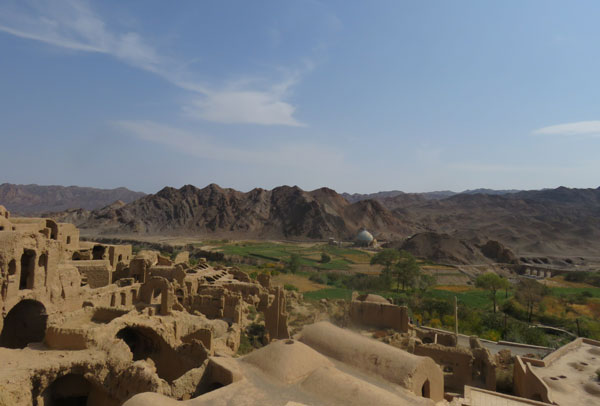
Discover the ancient allure of Kharanagh village, a significant heritage site located 80 km from Yazd. With a history spanning approximately 4500 years and a historical background of 1800 years, Kharanagh stands as a testament to Iranian history. The earliest documented mention of this region dates back 1370 years, during the reign of Yazdgerd III, the last king of the Sasanian Empire. Notably, a Zoroastrian cleric’s report from that time highlights Kharanagh’s prosperity as a resting place, featuring caravanserais for merchants and travelers. The village’s old name, “Khor-anagh,” translates to the sun’s birthplace.
Kharanagh village comprises two distinct parts – the old and the new. The old part, known as Kharanagh Castle, has been uninhabited for about three decades, showcasing spectacular, centuries-old structures. Meanwhile, the new section is home to minimalist villagers engaged in agriculture, cultivating crops such as turmeric, melons, cotton, wheat, and barley. The village, with 145 families, holds economic significance for the country due to its Iron ore, Uranium, Barite, Zinc, and Granite mines. Surprisingly, the heart of this desert is home to diverse wildlife, including cheetahs, rams, goats, wild cats, rabbits, and foxes, as well as various bird species.
The beautiful 1800-year-old Kharanagh Castle, situated in the old part of the village, dates back to the Sassanid period. Constructed entirely of clay and mud, this one-hectare residential citadel boasts secure spaces with two or three-story houses. The castle features six watchtowers and narrow, winding internal alleys, some of which played a role in the villagers’ strategies against thieves and bandits. “Wolf Alley” is particularly famous for trapping bandits until guards could prepare to ambush them.
Experience the rich history by staying in the renovated Kharanaq historical caravanserai, immersing yourself in the heart of the desert. If you spend the night in the village, you can marvel at the mesmerizing starry desert sky. Explore the captivating blend of ancient architecture, historical tales, and the serene desert environment that defines Kharanagh village.
PALANGAN VILLAGE
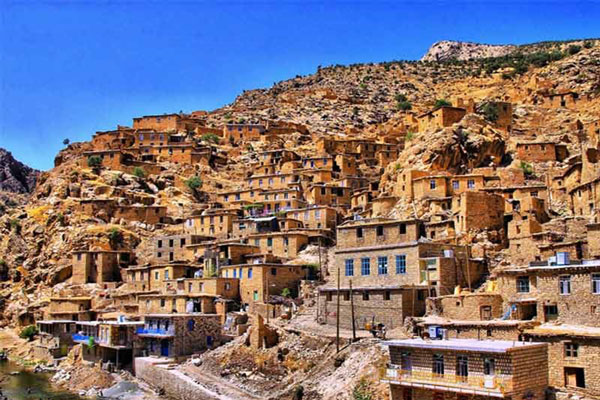
Explore the enchanting beauty of Palangan village, nestled in Kurdistan province, renowned for its breathtaking stepped architecture and stunning natural surroundings. Recognized as a cultural heritage site in Iran, Palangan has earned the titles of “Lost Paradise” and the “Masouleh of Kurdistan.”
Immerse yourself in the village’s unique charm, where traditional multi-story houses create a captivating landscape – the roof of one house serving as the yard for another. Palangan embraces a timeless atmosphere, devoid of modern buildings, preserving its cultural authenticity.
Indulge in the local culinary delights that make Palangan a culinary haven for tourists. Along the river and at the village entrance, discover trout fish booths offering delectable grilled fish paired with thin local loaves of bread. Delight your taste buds with local specialties like Doogh, Shalmin, Parpuleh, Volosheh, Ghazineh, and a variety of vegetarian dishes.
Palangan thrives on diverse economic activities, including agriculture, livestock, handicrafts, and fisheries. The western part of the village boasts picturesque orchards featuring wheat, barley, and an array of fruits such as pomegranates, peaches, apricots, and figs. Locally produced dairy items like buttermilk and curd, along with fresh fish and natural honey, offer a taste of Palangan’s rich offerings.
While exploring, don’t miss the opportunity to purchase unique handicrafts crafted by the skilled women of Palangan. Wedge weaving, jajim weaving, and wave weaving are the village’s most renowned handicrafts, showcasing the artistry and traditions passed down through generations.
Embark on a journey to Palangan village, where ancient architecture, natural wonders, and vibrant cultural experiences converge to create an unforgettable escape.
MESR & FARAHZAD VILLAGES
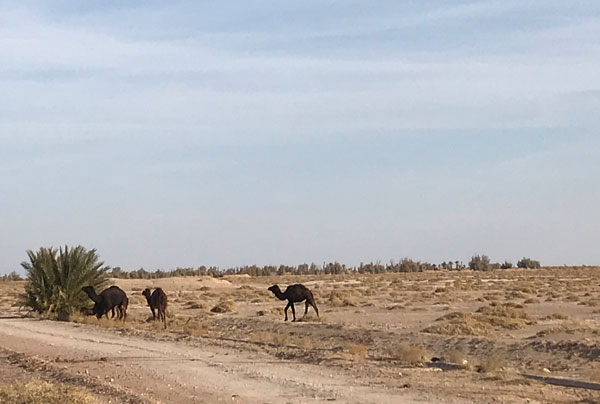
Discover the charm of Mesr and Farahzad oases, two renowned desert villages nestled in the heart of Dasht-e Kavir. These tiny villages are celebrated for their unique desert setting, offering excellent access to desert trekking and cycling activities. Situated in Khur town, a county in Esfahan province, Mesr and Farahzad stand far from the main tourist destinations, providing a tranquil escape.
To reach these hidden gems, embark on a journey through the three main tourist cities of Kashan (500 km), Esfahan (430 km), and Yazd (360 km). The remoteness of Mesr and Farahzad adds to their allure, providing a sense of seclusion and authenticity.
This region, once a part of the ancient Silk Road, holds historical significance. Renowned travelers and explorers such as Alfons Gabriel and Sven Hedin traversed this area on their expeditions. Sven Hedin’s photographs and books have become iconic for those fascinated by Persian culture, offering a glimpse into the rich history of this desert landscape. Experience the magic of Mesr and Farahzad, where the echoes of the Silk Road and the tales of explorers blend with the serene beauty of the desert.
GHALE BALA VILLAGE
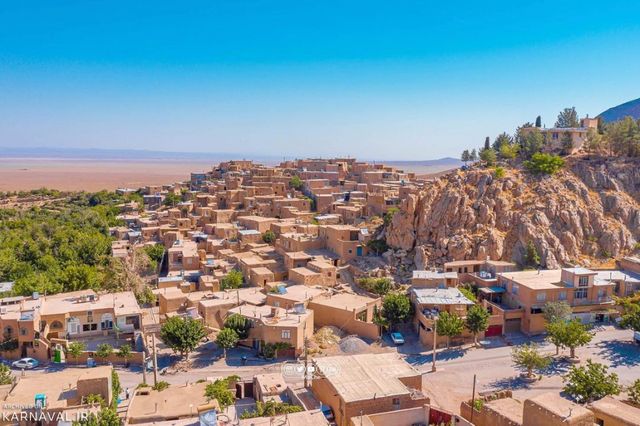
Explore the captivating Ghale Bala Village, situated in the southeast of Shahrud Town in Semnan Province, near Sabzevar Town in Razavi Khorasan Province, at the eastern edge of Iran’s Central Desert. Known for its distinctive stepped architecture, the village’s houses gracefully perch on the foothills of a mountain, creating a picturesque setting.
The village relies on a historical Qanat for its water supply, while the presence of ancient plane trees enhances the village’s aesthetic appeal. Adding to the allure of the region is the Kharturan National Park, home to the Asiatic cheetah and renowned for offering one of the best opportunities to see the Persian onager or Persian zebra—a unique species found exclusively in the Khar Turan Region and the Bahram Gur Protected Area in Fars province.
Khar Turan National Park boasts an impressive biodiversity, recognized as the Africa of Iran. The park is home to 41 species of mammals, 167 species of birds, 42 types of reptiles, 2 types of amphibians, and 72 types of snakes, as identified by the Department of Environment of Iran. Notable animals include the goitered gazelle, chinkara, caracal, bustard bird, laughing dove, Eurasian eagle-owl, cobra, and Greek tortoise.
Regarded as one of Iran’s most important national parks, Khar Turan National Park offers an untouched and incredible destination for wildlife enthusiasts. However, note that foreign travelers planning a trip to this area must obtain a license from the authorities, a process we can assist you with. Feel free to contact us for more information about visiting Khar Turan National Park and embark on a journey to witness the untouched beauty of this remarkable wildlife sanctuary.
ABYANE VILLAGE
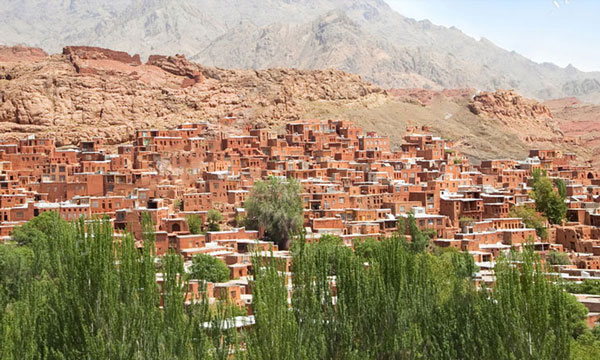
Explore the captivating Abyaneh village, the next beautiful village of Iran, situated 87 km from Kashan, Iran. This ancient village, boasting a delightful climate and a rich history spanning four thousand years, promises to leave you amazed. During the Safavid era, Abyaneh served as a preferred retreat for the relatives and courtiers of Safavid kings who summered in Natanz.
In the local language, Abyaneh is known as “Viuna,” derived from “Vi” meaning willow tree, and “Viuna” translating to a willow grove. Over time, “Viuna” transformed into “Avianeh” and eventually became Abyaneh.
The village’s traditional and unique architecture stands out as its primary tourist attraction. Most houses are cube-shaped, featuring wooden lattice doors and windows, and are stacked on mountainous terrain, creating a visually striking landscape. The old buildings are adorned with red soil, distinguished by its beautiful reddish hue resulting from a high level of iron oxide in the soil.
Abyaneh takes pride in preserving its language, architecture, costume, culture, and traditional rituals over the centuries, providing visitors with an immersive experience of the rich heritage of this ancient village. Immerse yourself in the charm of Abyaneh, where history, architecture, and culture converge to create an unforgettable journey.
BAYAZ VILLAGE
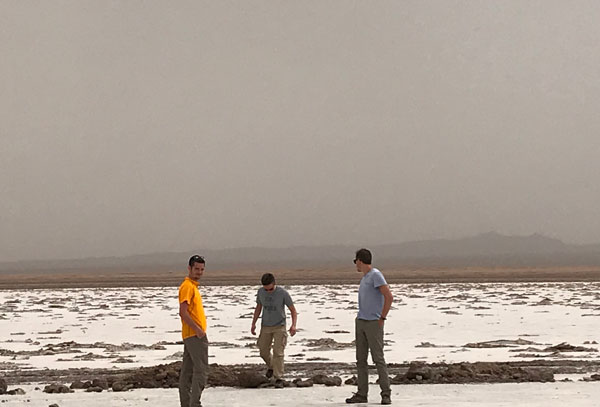
In the next beautiful villages of Iran, Explore the captivating Bayaz village, situated 55 km from Khur. Every year, from late September to early December, Bayaz village becomes a magnetic attraction for tourists eager to witness the transformation of the landscape into a sea of white, courtesy of the cotton fields—a phenomenon aptly referred to as the season of “white gold.” The term “white gold” is fitting, considering the economic value of cotton, rivaling that of the precious metal itself. Bayaz village, with its crucial role in planting and harvesting this valuable crop, is home to one of Iran’s first cotton processing factories, contributing significantly to the country’s economy.
With a population of just under four thousand people, Bayaz owes its prominence to its cotton fields and its ancient history. Beyond the agricultural landscapes, the village boasts historical treasures like Persian Qanats, old mills, the Abbasi Caravanserai, Sabz Pooshan Mosque, Twin Water Reservoir, and Bayaz Castle, making it a compelling tourist destination.
Bayaz Castle stands proudly at the village entrance, serving as a defensive fortification throughout history. The two-story castle, now featuring five remaining towers, maintains some of its original foundations and columns, though its exact age remains a mystery.
Historically, Bayaz village played a vital role on the “Royal Road,” a caravan route for merchants transporting precious commodities like tea and spices from India. The village’s Caravanserai, known as Bayaz Shah Abbasi, has stood for four centuries, with its construction allegedly left unfinished upon learning of the death of Shah Abbas. Covering an expansive area exceeding two thousand meters, the caravanserai stands as a testament to the village’s historical significance.
Adding to the allure, the Bayaz Twin Reservoir captivates visitors with its two tanks—one large and one small—each crowned by a wind tower. Bayaz village unfolds as a captivating destination where the fusion of agricultural wonders and historical landmarks creates an enriching experience for every visitor.
MAKHUNIK VILLAGE

And last beautiful villages of Iran, Explore the enchanting Makhunik village, celebrated worldwide for its unique charm as the city of the Lilliputians. Situated just half an hour from the Afghanistan border, Makhunik stands out as one of the most remarkable villages globally. Originally inhabited by Afghans who migrated centuries ago, the village is nestled 78 km east of Sarbisheh city in South Khorasan province, along the road from Sarbisheh to Doroh village.
Makhunik holds a distinguished place among the seven amazing villages of the world, thanks to its exceptional architecture, customs, and the distinctive culture of its people. Tucked away in barren mountains, this village offers a glimpse into a lifestyle that has thrived for centuries away from prying eyes.
While historically semi-isolated, Makhunik has recently gained road access, making it more easily reachable. The village’s most notable feature lies in its ancient texture, with modest adobe houses devoid of courtyards, porches, windows, or elaborate decorations. Immerse yourself in the captivating allure of Makhunik, where a rich cultural tapestry and unique architectural legacy await exploration.
We hope you enjoy this article about the beautiful villages of Iran. If you have any questions, please don’t hesitate to contact Tours Of Iran.

